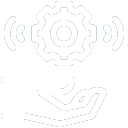Duration 5 Days
Introduction:
This course is designed is to provide pertinent information and practical insight to the participants for improving the performance of rolling element bearings, which then enhances the reliability of rotating equipment.
The course is designed for participants to understand the functions of bearings in relation to rotating equipment, its installation, its performance and to know the major signals/symptoms of Bearing failure.A basic understanding of the principles and practices of predictive maintenance is also covered.
Participants can use the skills and knowledge gained in this course to: Minimize bearing failures in equipment thus reducing downtime and cost; Perform regular preventive maintenance on equipments; and Quickly respond to bearing-related equipment and system failures.
The course discusses the modes of failure of bearings in equipments, how to check root cause and what methods available to eliminate them for the future.
Who Should Attend
The course is ideally suited for Maintenance Engineers, Service Engineers, Operations staff, and Machine repair persons from any industry using rotating equipments. It is recommended for Managers and Engineers responsible for bearing performance and reliability. Rotating equipment engineers, reliability engineers, millwrights, mechanics, maintenance supervisors and anyone interested in rolling element bearing and rotating equipment performance will find it useful.
Course Objectives
At the completion of the course, participants will understand:
Types of Bearings •
The functions of a bearing in rotating ma• chines.
The factors effecting the performance of rolling • element bearings
Bearing mounting and dismantling procedures •
Shaft alignment and how to correct for mis• alignment.
Bearing Inspection methods •
Causes of bearing failure •
Identify the symptoms of bearing trouble and • describe how to remedy each situation.
Shaft alignment, compensation for misalign• ment.
Root cause and Failure analysis •
Installation care and precaution •
Selection of lubricants. •
Replacement procedures •
Tools for servicing •
Course Outlines:
Introduction
Construction of Bearing, Components and their • functions
Material of construction •
Bearing design for misalignment compensation. •
Ball screw – for precision machines. •
Bearing life by design •
Causes of failure
Why do bearing fail, Bearing failure stages •
Bearing defect frequencies, Displaying fault fre• quencies
Types of wear, Major signals of Bearing failure •
Methods of Failure analysis •
Acceleration enveloping signal processing •
Standard acceleration and velocity measurement • setup
Failure prevention methods, Introduction to noise • and vibration analysis
Introduction to thermography, Ultrasonic level 1, • level 2
Preventive , Predictive maintenance
Purpose of maintenance, Scheduling of bearing • maintenance
Proactive reliability maintenance programs •
Comprehensive Bearing maintenance •
Improving reliability of Bearings in the system •
Bearing Maintenance and Service,Bearing reliabil• ity
Failure prevention methods •
Corrective actions, Servicing and checks
Misalignment,Thrust setting,Setting radial play •
Safety precautions that are essential for working •
Bearing Servicing procedure, Bearing check sheet •
Record / history of Bearing behavior •
Lubricant types, uses and selection criteria •
Bearing Selection
Bearing selection criteria for machine application •
Type of machine – Low speed, Medium speed, High • speed
Type of machine - Heavy non precision , Light Pre• cision
Slides and Spindle movements •
Installation
General principles of plain-bearing installation •
Inspection of bearings before fitment •
Knowledge of tools and equipments •
Following manufacturer’s recommendations •
Monitoring Bearing performance
Methods of checking soundness of bearing •
Bearing history records for future •
Performance monitoring procedure, Monitoring • equipments
Tools and service equipments
Types of tools used for bearing fitment •
Procedure for bearing removal ,Types of tools • used for bearing removal
Types of bearing fitness tests and records for future
 العربية
العربية





